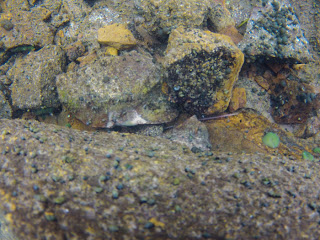 |
| Psychrophrynella illimani a critically endangered species |
Psychrophrynella Illimani is one critically endangered
species that is present just in Bolivia, it was found in 2002 and described in
2009 with just a couple of individuals, since 2002 were different attempts to
find more individuals in the area, but it was not possible to find more
individuals. In 2013 Jampatu project with Bolivian amphibian initiative
together with the Museo de Historia Natural Alcide d’Orbigny organized an strategy
to try to find this species and also to try to obtain new locations and also
information about natural history of this very poorly known species.
 |
| a male taking care of the offspring |
For this purpose
in August we went for the first time to the area to talk with local communities
and to present the project, since then we were able to go back every month and
now after a couple of months working in the area with a joint team we have
news!
 |
| variation in coloration of the species |
We found
the species in the area! Not just that, we found more locations where the
species is present and also we got a lot of data about the natural history of
the species.
Now after
some work with the species we have more data but also more questions and we
plan to keep working with this joint project to try to understand and to work
with local communities for the threatened amphibians of Bolivia.
 |
| P. illimani in the type locality |











